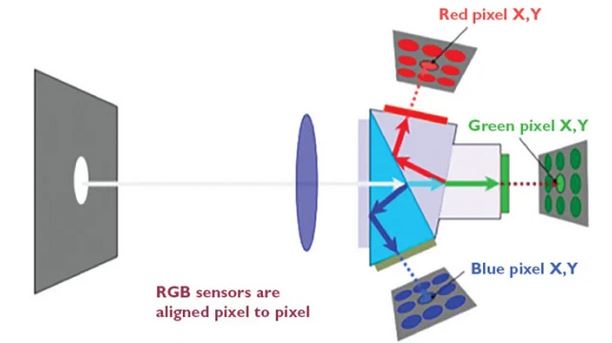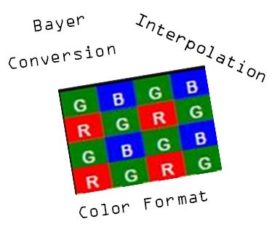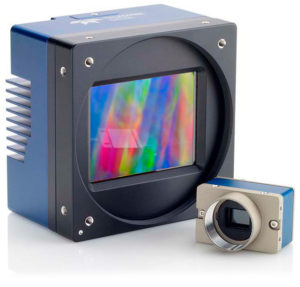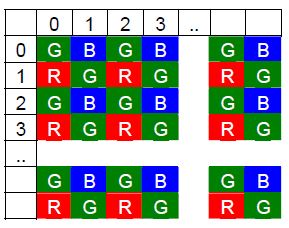Users of single chip color machine vision cameras have lots of choices in camera features. The following are a few issues relating to these types of cameras that users need to be aware of when they are choosing their camera type.
First, its important to understand how a “single chip” machine vision color camera creates a color image. Thanks to Bryce Bayer of Eastman Kodak, we have the “Bayer” filter mosaic filter pattern that generates a color image through interpolation which is the technique used in most machine vision cameras today.
From a macro view, using the Bayer filter, we collect light onto individual pixels through each of the red, green and blue filters which assigns intensity values. Using various interpolation methods, each pixel uses data from adjacent pixels to determine its color to generate a nice color image.
There are several considerations in color imaging during this process such as:
1 – Bayer conversion – Understanding this is important as it may effect the computer CPU load and image fidelity.
2 – Frame rates – Depending on the color format (ie. RGB vs Raw), you will need to understand how this effects the camera frame rate requirements and camera interfaces.
3 – Color formats – Depending if the application simply wants to identify a blue vs red part vs doing a more in depth color analysis will determine which color format is utilized.
1stVision has published a white paper addressing these considerations in the link below.
For any color application, there is various color camera technology that needs to be considered first. 3-Chip Color machine vision cameras have advantages over Bayer color cameras in which color fidelity and resolution are superior. Additional resources on each aspect is below:

Color Fidelity – If your application requires high color fidelity and trying to detect small differences in color, 3 chip color cameras should be also considered. Learn more in this related blog HERE.
Resolution – Due to the interpolation in Bayer color cameras, the overall resolution is reduced significantly. In applications where resolution AND color are important, 3 chip color cameras provide these advantages. Comparison images and further explanation can be found in this blog HERE.

discuss camera options.
1st Vision’s sales engineers have over 100 years of combined experience to assist in your camera selection. With a large portfolio of lenses, cables, NIC card and industrial computers, we can provide a full vision solution!
Ph: 978-474-0044 / info@1stvision.com / www.1stvision.com
Related Blogs:


